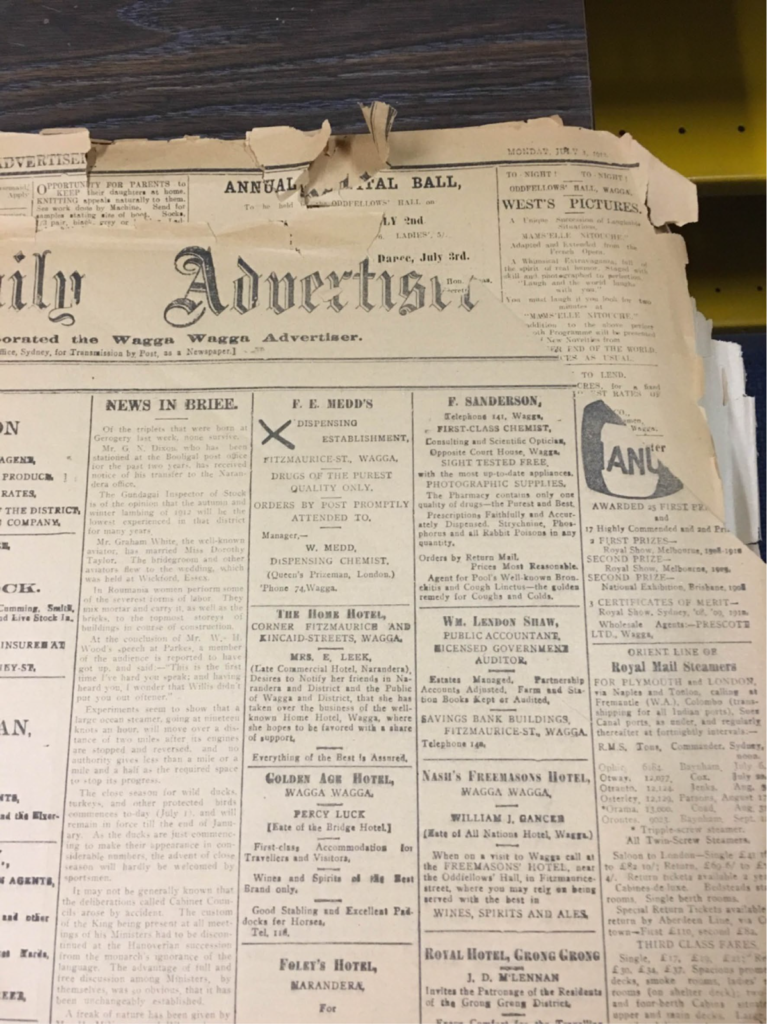Did newspapers in wartime get more discolored due to being accessed more frequently? This long-held belief is exactly what Professor Tim Wess of the Charles Sturt University in Australia set out to test, armed with nothing but a smartphone. In addition to testing the hypothesis, the researcher sought to establish whether data obtained from only a smartphone can be used to test a scientific hypothesis, and thus open the possibility of engaging citizens in data collection for the conservation of cultural heritage using the simplest tool available to them: their smartphones.
Our cell phones have many times the computing power of what was on the Moon lander. Combined with the convenience of high speed internet, rapid app development, and cloud computing, a new concept has emerged called citizen science that allows the public to contribute to data collection for research projects. All you need is your smartphone with a few basic apps, and you can contribute to projects ranging from identifying new stars in space to analyzing weather patterns and counting birds. The use of smartphones as a stand-alone measurement device for heritage conservation, however, is largely unheard of.
The inspiration for this study arose out of a casual conversation with the archivist of the Wagga Wagga Riverina Regional Archive in Australia, who pointed out that copies of the Wagga Wagga Daily Advertiser published during the First and Second World Wars appeared more discolored (yellowed) than copies printed before or after that period, possibly due to them being accessed more frequently to keep track of wartime developments.
With the help of an iPhone (or two) and a free colorimeter app, Wess took up the challenge of testing this hypothesis. A colorimeter makes it possible to specify a color numerically, in terms of the contents of the three primary colors (red, green, and blue) in it, using the standards set by the International Commission of Illumination. The numerical value of a color is what helps paint companies bring out many different shades of a single color, and allows us to see varied colors in print and digital media, among its many applications.
One iPhone was used as the source of illumination (to provide a standard source for all measurements), while the colorimeter app was installed on the other iPhone to serve as a detector. Wess analyzed copies of the Wagga Wagga Daily Advertiser published between 1876 and 2004, with a more detailed investigation of those published during the First World War. He focused on the copies’ “yellowing parameter” (degree of yellowness), and cross-verified these results by testing the same pages of the same copies using an industry-standard spectroradiometer (portable spectral device used in colorimetry).
Interestingly, yellowing in copies before 1910 was comparable to that after 1996. Yellowing was greater from 1912 to 1968 and fairly stable during this period; however, during this period, a different type of paper was used by the publisher, implying that changes in paper processing over time also need to be taken into account when assessing yellowing.
To disappoint those who were hoping that yellowing was higher for wartime journals, there was no significant spike in yellowing between 1914 and 1918 (First World War), and the most discolored copies belonged to the years 1924 and 1968, neither of which could be associated with any significant event locally or globally. Hence, the assumption that newspapers were more yellow due to their frequent access during the two World Wars, appears to be incorrect.
The results from the iPhone agreed fairly well with those obtained from the spectroradiometer. Thus, this study not only satiated the archivist’s curiosity, but also demonstrated that smartphones (with the necessary device capability) can be independently used to analyze discoloration in immovable cultural heritage without damaging them, and thus contribute to conservation efforts. By employing protocols to ensure reliable and safe data collection, cultural heritage research stands to benefit immensely from this modern technology.


